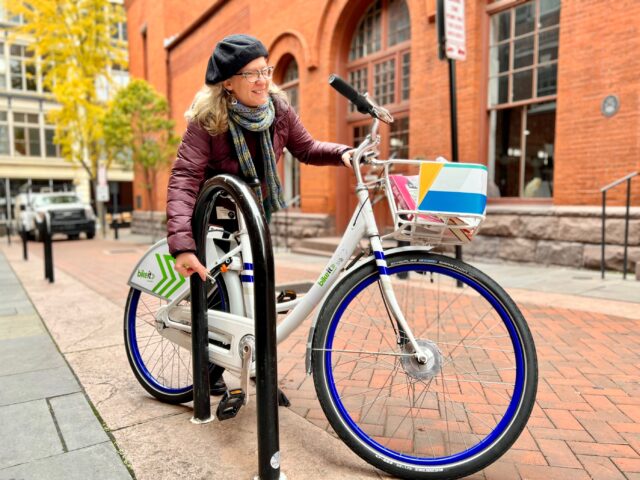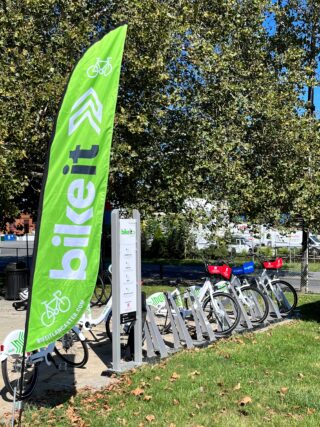Tandem Mobility Brings Shared Micromobility to Communities of All Sizes
by Odochi Akwani, Writer and Content Manager
August 27, 2025
Shared micromobility can benefit communities of all sizes, but it may mean starting small.

In many small towns and mid-sized communities, transportation options can be limited, making it challenging for residents to get where they need to go. Shared micromobility offers a promising solution to better connect people with everyday destinations, not just in big cities. According to the 2024 NABSA State of the Industry Report, bike share systems in small cities (less than 200,000 people) are steadily increasing.
Tandem Mobility is a bike share operator that works with communities of all sizes. They provide end-to-end support, including program design, operations, and management, especially for communities that may not have enough staff or resources to do it themselves. They see the importance of supporting all communities in their goals of offering more transportation options to their residents.
“[Micromobility] becomes viable when communities themselves, the municipalities, the leadership are bought into it being an important amenity,” says Stacy Sebeczek, VP of mobility solutions at Tandem Mobility. “Oftentimes, smaller communities need to start out with smaller programs that may serve more of a recreational purpose initially, and then that can grow in density to become a true transportation solution over time. There’s not really a world where small communities usually launch dense systems, but you have to start somewhere.”
One example of a smaller city where Tandem operates is Lancaster, Pennsylvania, with its bike share system Bike It Lancaster. The city itself is home to just under 60,000 people.
“Lancaster, and I can probably speak for the other cities too, has a jobs and housing imbalance where the jobs are not close to where people live,” says Karl Graybill, environmental planner at the City of Lancaster.
All photos courtesy of the City of Lancaster, PA.
This imbalance highlights the need for flexible, accessible transportation options that can bridge the gap between home and work as well as other essential destinations. According to Graybill, a lot of the local commuting is between the city’s Amtrak station and apartment complexes on the edge of the city to downtown.
Regional networks like Redwood Bikeshare in California’s Bay Area or Tandem’s KanCycle system in North Central and Southeast Kansas make it possible for regions to stay connected and complement other transit systems while giving residents greater access to jobs and services by expanding the distance accessible to travel. A study by the New Urban Mobility Alliance found that integrating micromobility with public transit significantly improved job access, especially for lower-income residents.
Sebeczek emphasizes the importance of collaboration when it comes to regional shared micromobility networks. “If we can get everybody aligned on a regional vision, it makes it easier for those smaller communities to tap in. We do the structural work and provide the pathway forward, and have neighboring communities aligned. It makes it easy for a city to see beyond the value for their own community, and start to open up to the idea of the ease of connecting communities.”
Even when infrastructure projects aren’t perfect or complete, there’s a case to be made for starting somewhere. This may be part of a long-term transportation vision. But, success, Sebeczek notes, should be measured realistically.
“It is something where I don’t want small cities to have false expectations around success, where success actually can be defined as people are just riding it at all at first,” she says. “That metric can change over time as the community goals change over time. Initially, it’s very reasonable to start out just looking for recreational ridership and then build off of that.”
Shared micromobility can work in communities of all sizes, but it starts with creating a foundation for future growth. With the right support and a willingness to start small, these programs can become a vital part of a community’s transportation network.
___________________________________________________________________________________________
The Better Bike Share Partnership is funded by The JPB Foundation as a collaboration between the City of Philadelphia, the National Association of City Transportation Officials (NACTO), and the PeopleForBikes Foundation to build equitable and replicable bike share systems. Follow us on LinkedIn, Facebook, Twitter, and Instagram, or sign up for our weekly newsletter.
Have a question or a story idea? Email odochi@peopleforbikes.org.


